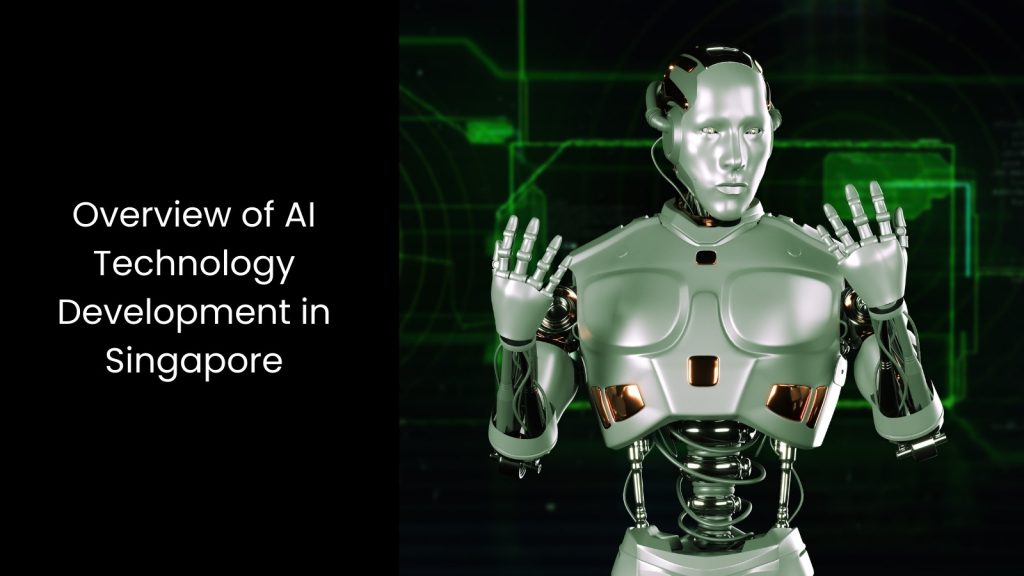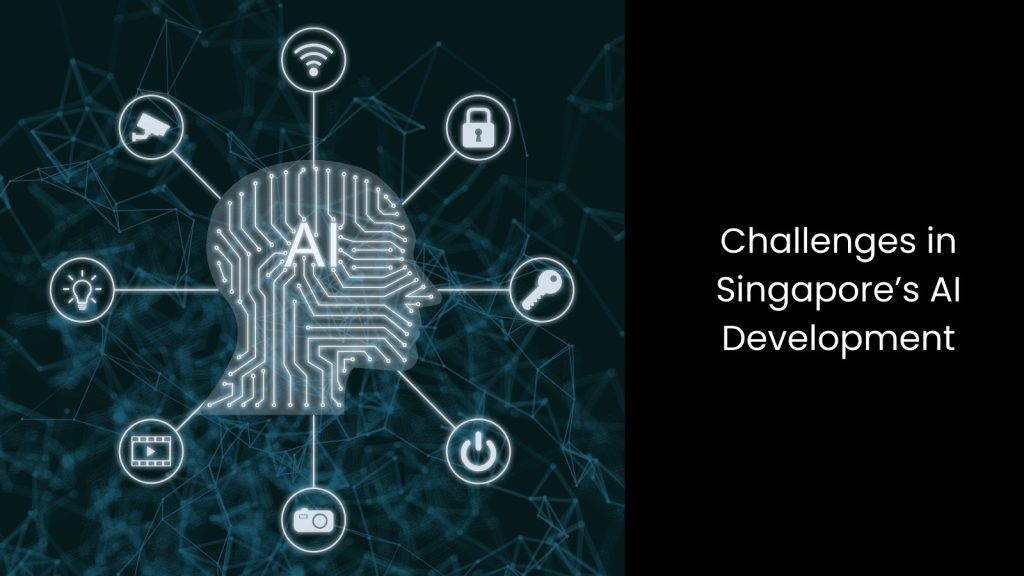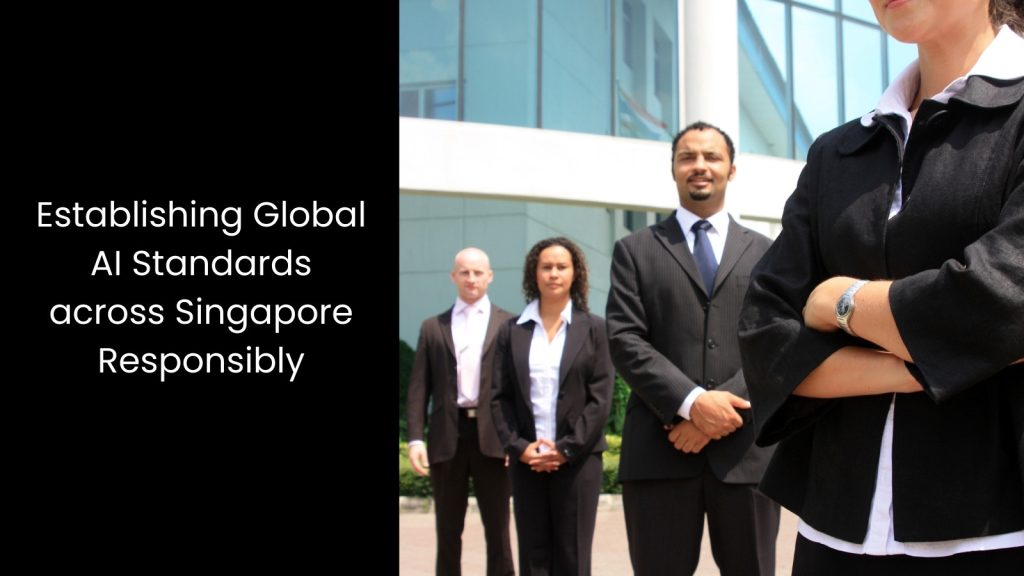Singapore is a nation renowned for its economic power and highly skilled workforce. However, it is also visible that this country has long relied on foreign labour to fuel its growth. The development of Artificial Intelligence seems to disrupt this long standing dynamic when it comes to the foreign workforce of Singapore. A recent study suggests that many Singaporean jobs could be automated within the next decade. This alarming statistic raises concerns about the displacement of workers, both local and foreign. As AI technology continues to advance, questions arise about the future role of foreign workers in Singapore and the potential impact of automation on the nation’s labour market.
In this article, we look into the challenges that have arisen over the past years regarding the above-said issue.
We will understand
Overview of AI Technology Development in Singapore

- There is no doubt that Singapore leads the way in artificial intelligence development across various sectors, transforming industries and driving economic growth. In manufacturing as the main industry, AI enhances production efficiency and quality control as it enables predictive maintenance and automated inspection processes. These advancements increase output and reduce costs, solidifying Singapore’s position as a global manufacturing centre.
- The development and implementation are not limited to one aspect. The financial sector adopts AI for risk management, fraud detection, and personalised banking services. In the meantime, AI-powered algorithms analyse large datasets in real time, helping banks identify fraudulent activities and tailor products to individual customer needs.
- Likewise, Singaporean healthcare sees a surge in AI-driven innovations, from early disease detection using machine learning to robotic-assisted surgeries. AI streamlines patient care by analysing medical records and providing doctors with actionable insights, improving patient outcomes and reducing healthcare costs.
- It is a good movement that Singaporean retailers also use AI to analyse consumer behaviour, optimise inventory, and enhance customer engagement, as this would result in higher sales and customer satisfaction.
- Schools and institutions in Singapore started using AI to identify learning gaps, enabling educators to offer targeted support and improve student outcomes. The government also integrates AI into public services to enhance efficiency and decision-making.
- However, this fast movement towards an ‘AI-driven tomorrow’ has some negative impacts that need to be answered innovatively and responsibly.
Challenges in Singapore’s AI Development

Experiencing Economic Shifts Due to AI
It is a solid fact that artificial intelligence is reshaping Singapore’s economy as it boosts manufacturing output. Not only that, but it also optimises customs facilitation and creates new jobs.
However, it poses a risk of job displacement for low-wage migrant workers, who have been vital to Singapore’s economy but are now vulnerable as AI automation changes perceptions of value and expertise.
Many sectors, such as manufacturing and construction in Singapore, have relied heavily on migrant labour for tasks that require manual effort. As AI and robotics take over these roles, employers find it more cost-effective to use machines that work faster and more precisely than humans. This shift threatens the jobs of thousands of foreign workers who have moved to Singapore for better employment opportunities.
Migrant workers face additional challenges because they often lack the digital skills needed to transition into more technology-focused roles. While Singapore has launched initiatives like SkillsFuture to upskill its workforce, these programmes mainly target citizens and permanent residents, leaving migrant workers behind.
Without access to training in AI and digital technologies, these workers struggle to find new job opportunities in an economy increasingly dominated by automation. The rise of AI also changes how society views different types of work. As AI takes over tasks once considered valuable, the perception of manual labour shifts, making it seem less significant. This devaluation makes it harder for low-wage workers to secure fair wages and job security.
Poses Challenges due to Robotisation
AI and automation risk exacerbating socioeconomic divides, particularly for the 999,000 low-wage migrant workers in Singapore. How does this occur? Let us explain briefly.
Surveys have identified that these workers usually face job losses due to increased robotisation in sectors like construction and manufacturing, as we mentioned above, while their exclusion from initiatives like SkillsFuture limits their ability to adapt to the digital economy.
As Singapore invests in robots and AI to enhance productivity, many jobs that migrant workers perform become automated. In construction, robots can now lay bricks, operate machinery, and perform tasks that once required human labour. In manufacturing, AI-driven machines handle tasks like assembly, packaging, and quality control more efficiently than humans. This shift results in fewer job opportunities for low-wage foreign workers, who have been crucial in filling labour gaps for years.
These workers already face challenges, such as high debts and limited access to training, making it difficult for them to pivot to new roles within the evolving digital economy. This exclusion creates a cycle where low-wage workers become more vulnerable to job displacement without a pathway to learn the skills needed for emerging technology-driven jobs.
Singapore’s Intense AI-Driven Labour Market
Did you know that Singapore’s push for AI adoption has resulted in a more robot-dense environment? Yes, it has intensified to the extent that there are 730 industrial robots per 10,000 employees!
While this has led to a decline in manufacturing employment, it underscores a broader shift in valuing expertise over manual labour. Not to highlight that this would threaten the livelihoods of low-wage migrant workers who may be forced to leave Singapore.
In sectors like manufacturing in particular, robots handle tasks such as assembly and packaging more efficiently than human workers. This leads companies to choose automation over hiring. This change puts migrant workers, who generally take on these manual roles, at risk of losing their jobs.
On the other hand, as robots and AI take over repetitive tasks, Singapore’s labour market increasingly demands higher-skilled workers with expertise in technology and digital tools. However, low-wage migrant workers, who have long filled the gaps in jobs that residents find undesirable, find it hard to adapt to these new requirements due to a lack of access to upskilling opportunities.
Societal and Regional Impact
AI-induced job displacement in Singapore creates problems not only for the migrant workers but also for their home countries.
When migrant workers lose their jobs due to AI and automation, they often have to return to their home countries without much notice. These returning workers will flood the local job markets, causing a surplus of labour that can lead to higher unemployment rates and lower wages for everyone in those regions.
Many of these countries already struggle with poverty and limited job opportunities, so the sudden influx of jobless workers only adds to their economic challenges. This situation puts pressure on families and communities that rely on remittances sent home by these workers. Without a steady income from Singapore, these families will fall into deeper financial hardship.
Additionally, returning workers may have skills that are not in demand in their home countries, making it even harder for them to find new employment. This issue creates a conflict with Singapore’s stated goal of narrowing the development gap among ASEAN member states.
It is a widely known fact that Singapore aims to be a leader in responsible and inclusive AI adoption, but the displacement of foreign workers runs counter to these values. If they cannot provide adequate support or pathways for displaced workers to transition into new roles, Singapore will risk widening the inequality between itself and its neighbouring countries. This growing divide could strain regional relationships and diminish Singapore’s role as a responsible leader in Southeast Asia.
Calls for Ethical AI Adoption
In the above sections, we covered the challenges Singapore’s migrant workforce encounters. However, every problem has a solution.
To address the challenges posed by AI, Singapore should take the lead in establishing ethical labour practices that protect its foreign workforce. We should not forget that many migrant workers in Singapore perform essential jobs that keep the economy running, yet they often receive the label of ‘low skilled.’
This term undervalues their contributions and overlooks the hard work and dedication they bring to sectors like construction, healthcare, and manufacturing. In an era where AI and automation threaten to displace these workers, it is indeed crucial for Singapore to rethink how it defines and values such labour.
Singapore can start by redefining what ‘low-skilled’ means, shifting the focus to recognise the importance and impact of these roles. Doing so can create a more inclusive narrative that values all forms of work, regardless of the tasks involved.
In addition to changing perceptions, Singapore should advocate for an ASEAN-wide standard to protect workers who lose their jobs due to AI. This regional approach would ensure that displaced workers receive fair treatment, support, and opportunities for reskilling or upskilling across Southeast Asia.
Establishing Global AI Standards across Singapore Responsibly

You may notice that Singapore’s AI-driven progress offers both opportunity and risk. To mitigate the threats to its foreign workforce, the nation must adopt ethical standards that value all contributions. This requires striking the right balance between development and framework. In the upcoming years, if Singapore can opt for responsible AI adoption, this nation will be the first to serve as a global model for balancing innovation with the protection of human rights.

